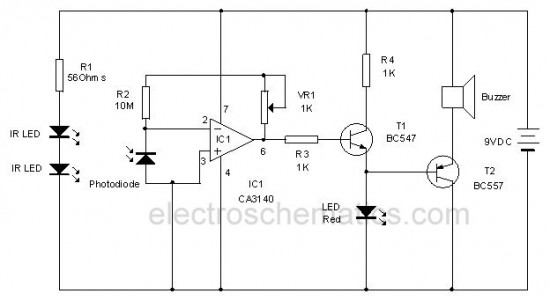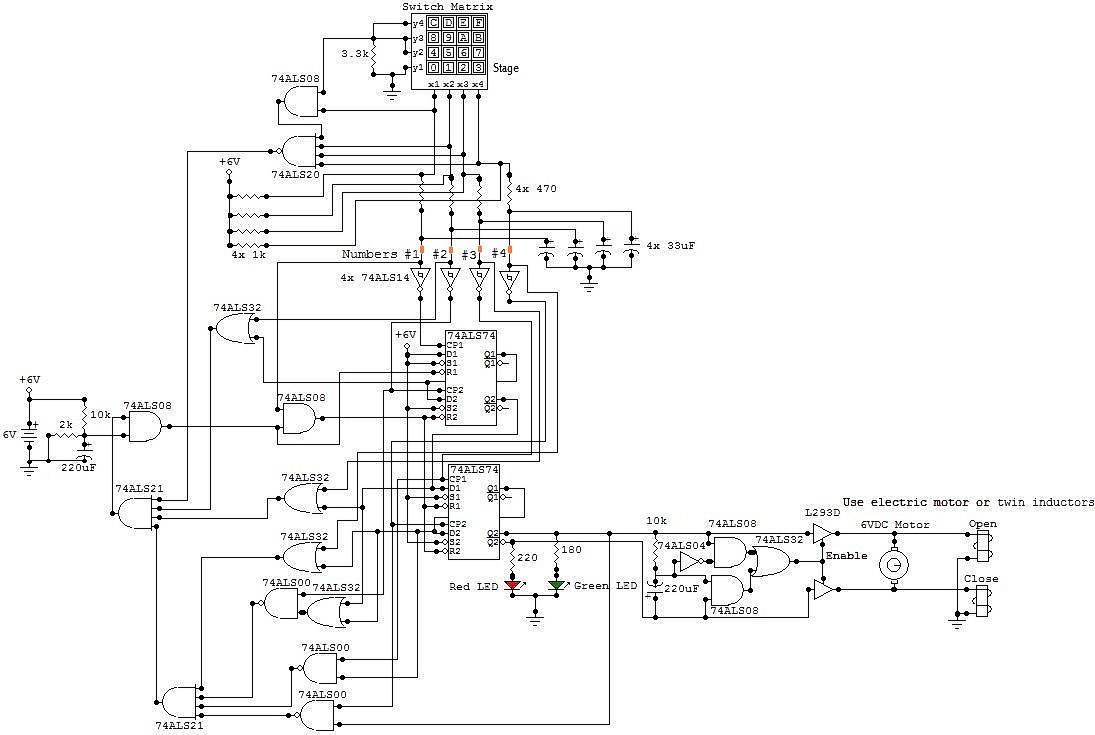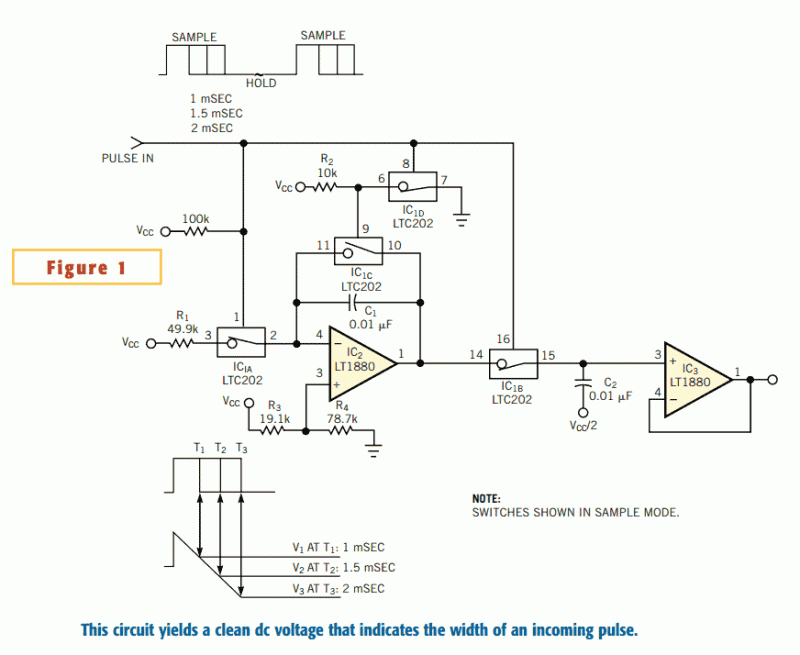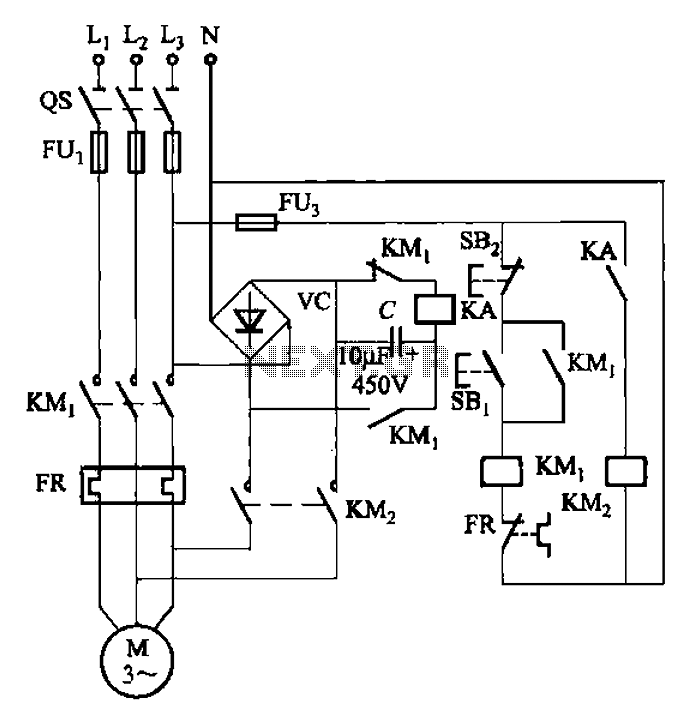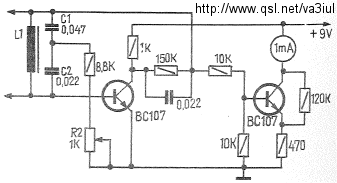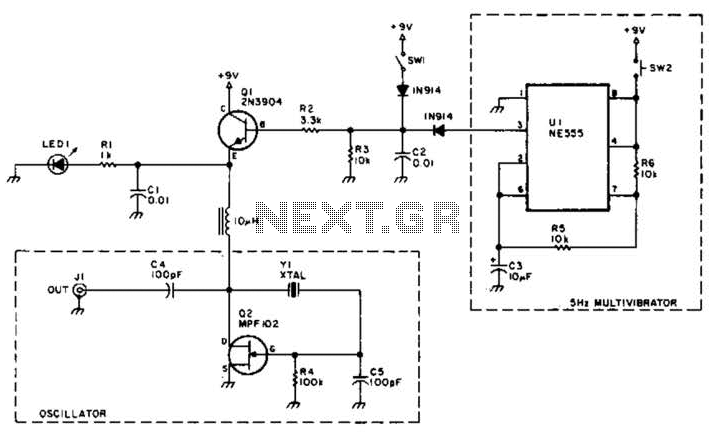
Signal Generator circuit
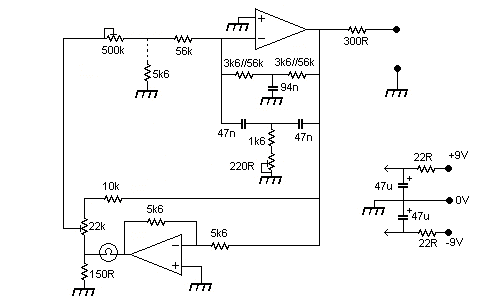
The output level was set to 3.8V peak to peak. The initial objective was to compare several different operational amplifiers (op-amps) before further optimizing the circuit. The op-amps evaluated were the TL072, LM4562, and OPA2134. The distortion spectra are presented next, with the 500k feedback level control set to maximum resistance in all cases. This setting is not the maximum value that allows oscillation, indicating that further improvements are possible. For subsequent tests, a 5.6k resistor, indicated with a dotted connection, was added. The results were somewhat unexpected. Although the TL072 is an older model, it performed comparably to the two ultra-low distortion types. When used as an inverting amplifier, most op-amps perform adequately at 1 kHz. All three op-amps exhibited more second harmonic distortion than third harmonic. The LM4562 produced the lowest second and third harmonics but displayed additional components at nearly 100 Hz intervals. The circuit is powered by 9V rechargeable batteries, ruling out mains supply frequency issues. Concerns regarding stability with the LM4562 arise from its 55 MHz gain-bandwidth specification, suggesting that careful layout is essential. The circuit was constructed on veroboard, and a 100nF capacitor was included between the op-amp supply pins as sometimes recommended. While layout may contribute to the observed issues, the presence of frequency components at approximately 100 Hz remains enigmatic, as no obvious intermodulation sources were identified at that frequency. The decision was made to continue using the OPA2134, whose 8 MHz gain bandwidth might be more suited to the less-than-optimal experimental layout. The datasheet for another ultra-low distortion op-amp, the LME49990, suggests using three parallel capacitors of varying values and dielectrics for supply bypassing, although the rationale is not explained beyond empirical evidence. Previous use of parallel capacitors without thorough consideration led to the conclusion that this practice lacks utility, and theoretical justification would be beneficial. Potential issues with parallel resonances when utilizing capacitors of different values have been documented. A single bypass capacitor of a few microfarads, with leads kept short to minimize series inductance, is the preferred approach for most audio applications. Utilizing the OPA2134, adjusting the 220-ohm resistor in the twin-T configuration allowed the reduction of the third harmonic to -120 dB relative to the 1 kHz fundamental, while the second harmonic remained largely unchanged. Reducing the 500k feedback level control resulted in a more significant increase in the third harmonic compared to the second. This suggests that the second harmonic is primarily due to op-amp distortion, while the third harmonic originates from the lamp. The lamp may also introduce some second harmonic distortion if a DC component is applied, although the op-amp offsets should only produce a minimal DC level. Op-amp distortion could be problematic due to the relatively low supply voltage and the loading effects of the twin-T filter. Nonetheless, the second harmonic levels exceed expectations based on the op-amp specifications. The OPA2134 datasheet indicates that the second harmonic is typically higher than the third. Some non-harmonic components, such as those around 4.3 kHz, were noted; however, the absence of a screening box during testing suggests that using a metal enclosure would likely improve results. Further attenuation of feedback through the 500k preset, by adding a 5.6k resistor to ground at the junction with the 56k resistor, confirmed that the feedback required for oscillation could be significantly reduced while maintaining the preset at maximum resistance, at which point the third harmonic was no longer detectable.
The described circuit focuses on evaluating the performance of different operational amplifiers in terms of harmonic distortion, specifically second and third harmonics. The op-amps selected for this comparison—TL072, LM4562, and OPA2134—represent a range of technologies and specifications. The testing setup involves a feedback network with a 500k potentiometer, allowing for adjustments in feedback levels to observe their impact on harmonic distortion.
The circuit employs a twin-T filter configuration, which is known for its effectiveness in audio applications. The choice of op-amps is critical, as their characteristics directly influence the distortion profile of the output signal. The TL072, despite being an older design, demonstrates competitive performance, while the LM4562 shows unique behavior with its unexpected harmonic content. The OPA2134 emerges as a suitable candidate for this application, balancing performance with layout considerations.
Powering the circuit with 9V rechargeable batteries eliminates potential interference from mains power, emphasizing the importance of circuit layout and component placement in minimizing distortion. The inclusion of bypass capacitors, particularly the 100nF capacitor between the op-amp supply pins, is a common practice aimed at enhancing stability and reducing noise.
In terms of feedback manipulation, the adjustments made to the 220-ohm resistor and the 500k potentiometer provide insights into the relationship between feedback levels and harmonic distortion. The findings indicate that op-amp distortion is a significant contributor to the second harmonic, while the lamp used in the circuit may introduce additional harmonic content.
Overall, this evaluation highlights the complexities involved in optimizing audio circuits for low distortion. The results underscore the need for careful component selection, layout considerations, and an understanding of the interactions between various elements within the circuit to achieve the desired performance characteristics.The output level was set to 3. 8V peak to peak, not for any good reason, the first aim was to compare a few different op-amps before trying to further optimise the circuit. The op-amps were TL072, LM4562 and OPA2134. The distortion spectra are shown next, in all cases the 500k feedback level control was set to maximum resistance.
Clearly this is not the maximum value allowing oscillation, so some further improvement should be possible. For later tests the 5k6 shown with a dotted connection was added. These were not entirely what I had expected. The TL072 is rather ancient, but even so was not far behind the two `ultra-low distortion` types. Used as an inverting amplifier most op-amps perform reasonably well at 1kHz. All three op-amps produced more second harmonic than third. The most baffling result however is the LM4562, which appears to have the lowest 2nd and 3rd harmonics, but has additional components at very close to 100Hz intervals. The board is powered from 9V rechargeable batteries, so it is not a mains supply frequency problem. I had thought there may be some stability problems with this op-amp, its 55MHz gain-bandwidth specification is worrying, and suggests far more care is needed with layout.
I built the circuit on a piece of veroboard, but included the sometimes recommended 100n capacitor between the op-amp supply pins. I can easily believe that layout is the cause of the problem, but why there would be frequency components at almost exactly 100Hz intervals remains a mystery, there was nothing obvious at 100Hz to cause an intermodulation effect.
Anyway, not wanting to spend much time trying to solve that problem I decided to stick with the OPA2134. Its more modest 8MHz gain bandwidth is maybe more compatible with my seriously sub-optimum experimental layout.
Looking at the data sheet for another ultra-low distortion op-amp, the LME49990, supply bypassing using three parallel capacitors with different values and dielectrics is suggested, for reasons not explained other than being `from experiment`. I have occasionally in the past used parallel capacitors without much thought, but having concluded that this serves no useful purpose and abandoned the practice I would have liked to see some theoretical justification.
There is some evidence of potential problems with parallel resonances when parallel capacitors of different values are used, e. g. see here. Choosing a single supply bypassing capacitor of a few uF with leads close together and as short as possible to minimise series inductance is my approach for most audio applications.
Using the OPA2134, by adjusting the 220R in the twin-T the 3rd harmonic could be reduced to -120dB relative to the 1kHz fundamental, but the 2nd harmonic changed very little. Reducing the 500k feedback level control the 3rd increased far more than the 2nd. The obvious conclusion is that the 2nd harmonic is op-amp distortion, and the 3rd is from the lamp. The lamp could also add some 2nd harmonic if there is a dc component applied to it, but there should only be a very low level of dc resulting from the op-amp offsets.
Op-amp distortion could be a real problem because of the relatively low supply voltage and the loading effect of the twin-T filter. Even so the 2nd harmonic is higher than I would expect from the op-amp specifications. The OPA2134 data sheet does show the relative levels of 2nd and 3rd, with the 2nd significantly higher.
There are a few non-harmonic components, e. g. around 4. 3kHz, but no screening box was used during these tests, so with a metal case this should be much improved. Further attenuation of the feedback through the 500k preset by adding a 5k6 to earth at the junction with the 56k resistor confirmed that the feedback needed for oscillation could be reduced much further, and the preset could still be set to its maximum resistance, at which point the 3rd harmonic had disappeared from view, somewhere
🔗 External reference
The described circuit focuses on evaluating the performance of different operational amplifiers in terms of harmonic distortion, specifically second and third harmonics. The op-amps selected for this comparison—TL072, LM4562, and OPA2134—represent a range of technologies and specifications. The testing setup involves a feedback network with a 500k potentiometer, allowing for adjustments in feedback levels to observe their impact on harmonic distortion.
The circuit employs a twin-T filter configuration, which is known for its effectiveness in audio applications. The choice of op-amps is critical, as their characteristics directly influence the distortion profile of the output signal. The TL072, despite being an older design, demonstrates competitive performance, while the LM4562 shows unique behavior with its unexpected harmonic content. The OPA2134 emerges as a suitable candidate for this application, balancing performance with layout considerations.
Powering the circuit with 9V rechargeable batteries eliminates potential interference from mains power, emphasizing the importance of circuit layout and component placement in minimizing distortion. The inclusion of bypass capacitors, particularly the 100nF capacitor between the op-amp supply pins, is a common practice aimed at enhancing stability and reducing noise.
In terms of feedback manipulation, the adjustments made to the 220-ohm resistor and the 500k potentiometer provide insights into the relationship between feedback levels and harmonic distortion. The findings indicate that op-amp distortion is a significant contributor to the second harmonic, while the lamp used in the circuit may introduce additional harmonic content.
Overall, this evaluation highlights the complexities involved in optimizing audio circuits for low distortion. The results underscore the need for careful component selection, layout considerations, and an understanding of the interactions between various elements within the circuit to achieve the desired performance characteristics.The output level was set to 3. 8V peak to peak, not for any good reason, the first aim was to compare a few different op-amps before trying to further optimise the circuit. The op-amps were TL072, LM4562 and OPA2134. The distortion spectra are shown next, in all cases the 500k feedback level control was set to maximum resistance.
Clearly this is not the maximum value allowing oscillation, so some further improvement should be possible. For later tests the 5k6 shown with a dotted connection was added. These were not entirely what I had expected. The TL072 is rather ancient, but even so was not far behind the two `ultra-low distortion` types. Used as an inverting amplifier most op-amps perform reasonably well at 1kHz. All three op-amps produced more second harmonic than third. The most baffling result however is the LM4562, which appears to have the lowest 2nd and 3rd harmonics, but has additional components at very close to 100Hz intervals. The board is powered from 9V rechargeable batteries, so it is not a mains supply frequency problem. I had thought there may be some stability problems with this op-amp, its 55MHz gain-bandwidth specification is worrying, and suggests far more care is needed with layout.
I built the circuit on a piece of veroboard, but included the sometimes recommended 100n capacitor between the op-amp supply pins. I can easily believe that layout is the cause of the problem, but why there would be frequency components at almost exactly 100Hz intervals remains a mystery, there was nothing obvious at 100Hz to cause an intermodulation effect.
Anyway, not wanting to spend much time trying to solve that problem I decided to stick with the OPA2134. Its more modest 8MHz gain bandwidth is maybe more compatible with my seriously sub-optimum experimental layout.
Looking at the data sheet for another ultra-low distortion op-amp, the LME49990, supply bypassing using three parallel capacitors with different values and dielectrics is suggested, for reasons not explained other than being `from experiment`. I have occasionally in the past used parallel capacitors without much thought, but having concluded that this serves no useful purpose and abandoned the practice I would have liked to see some theoretical justification.
There is some evidence of potential problems with parallel resonances when parallel capacitors of different values are used, e. g. see here. Choosing a single supply bypassing capacitor of a few uF with leads close together and as short as possible to minimise series inductance is my approach for most audio applications.
Using the OPA2134, by adjusting the 220R in the twin-T the 3rd harmonic could be reduced to -120dB relative to the 1kHz fundamental, but the 2nd harmonic changed very little. Reducing the 500k feedback level control the 3rd increased far more than the 2nd. The obvious conclusion is that the 2nd harmonic is op-amp distortion, and the 3rd is from the lamp. The lamp could also add some 2nd harmonic if there is a dc component applied to it, but there should only be a very low level of dc resulting from the op-amp offsets.
Op-amp distortion could be a real problem because of the relatively low supply voltage and the loading effect of the twin-T filter. Even so the 2nd harmonic is higher than I would expect from the op-amp specifications. The OPA2134 data sheet does show the relative levels of 2nd and 3rd, with the 2nd significantly higher.
There are a few non-harmonic components, e. g. around 4. 3kHz, but no screening box was used during these tests, so with a metal case this should be much improved. Further attenuation of the feedback through the 500k preset by adding a 5k6 to earth at the junction with the 56k resistor confirmed that the feedback needed for oscillation could be reduced much further, and the preset could still be set to its maximum resistance, at which point the 3rd harmonic had disappeared from view, somewhere
🔗 External reference
